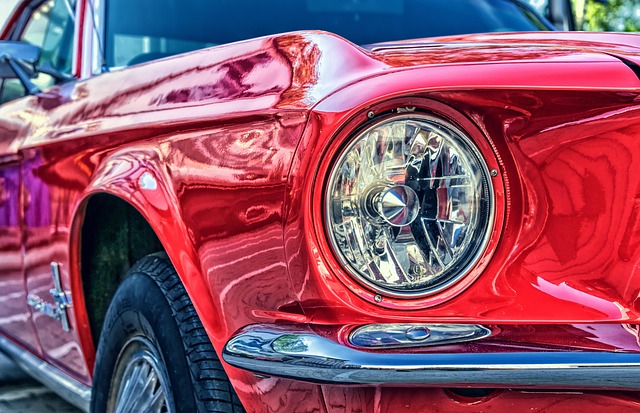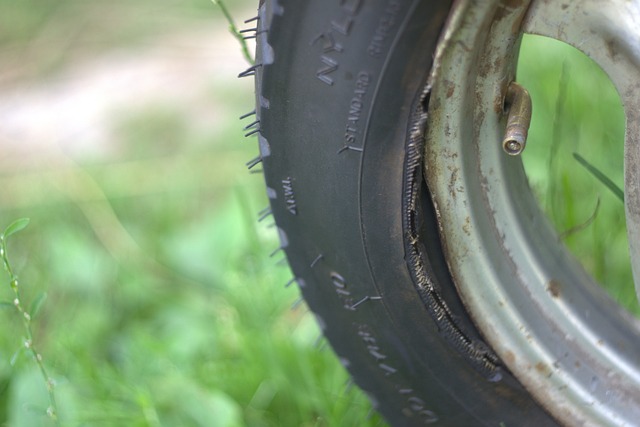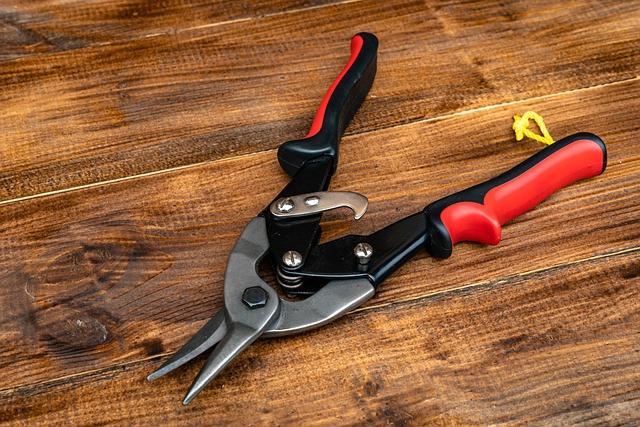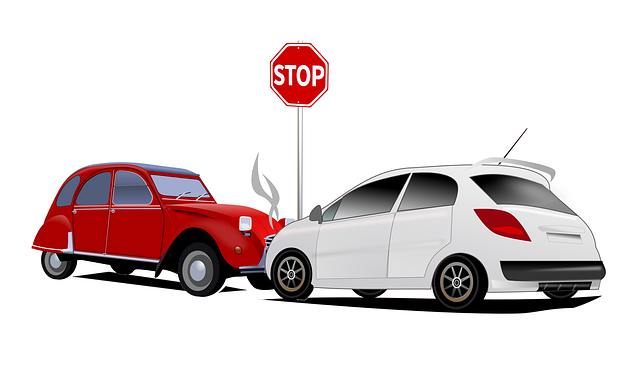Convertible Top Repair 101: A Step-by-Step Guide for Beginners
Convertible top repair requires careful assessment of damage such as tears, rust, misaligned frames,…….
Welcome to an immersive exploration of the world of convertible top repair, a specialized craft that brings life to the iconic flexible roofs adorning various automotive models. This article aims to guide readers through the intricate process, significance, and global impact of repairing and maintaining these distinctive features. By delving into its historical roots, technical intricacies, and evolving trends, we’ll uncover the importance of convertible top repair in both the automotive industry and consumer experiences.
Definition: Convertible top repair involves the meticulous maintenance, replacement, and restoration of flexible roofs on vehicles designed with this unique feature. These roofs, known as convertible tops, can transform from a closed position, providing a traditional hardtop experience, to an open configuration, offering drivers and passengers a panoramic view and an enhanced sense of connection with the outdoors.
Core Components: The convertible top system comprises several critical parts:
Roof Fabric: Typically made from durable materials like polyester or nylon, this fabric is designed to withstand various weather conditions and maintain its flexibility over time.
Frame and Track System: A complex network of metal frames and tracks supports the roof’s movement, ensuring smooth operation during opening and closing.
Motor and Actuators: Electric motors and actuators power the roof’s mechanism, allowing it to switch between open and closed positions at the driver’s command.
Sealants and Gaskets: These critical components create a weatherproof seal when the roof is closed, preventing water intrusion and ensuring optimal passenger comfort.
Historical Context: The concept of convertible roofs dates back to the early 20th century, with pioneers like the Daimler Motor Company introducing the first practical convertible top in the 1920s. Over time, as automotive technology advanced, convertible tops evolved from simple canvas canopies to sophisticated, multi-layer systems featuring glass windows and advanced sealing mechanisms. Today, they are a sought-after feature for luxury and sportscars, offering both style and functionality.
Significance: Convertible top repair is not merely about fixing a broken roof; it’s about preserving the integrity, performance, and aesthetic appeal of a vehicle. Proper maintenance ensures optimal driver enjoyment, enhances safety by maintaining proper sealing, and can significantly impact the overall value and resale potential of a car.
The market for convertible top repair is a global phenomenon, with varying levels of adoption and demand across different regions. Here’s a glimpse into its international influence:
| Region | Market Size (Estimated 2023) | Key Trends |
|---|---|---|
| North America | $5.2 billion | Increasing popularity of electric convertibles, rise in luxury car sales |
| Europe | $4.8 billion | Stricter environmental regulations driving innovative sealing technologies |
| Asia-Pacific | $3.5 billion | Growing middle class embracing sportscars with convertible options |
| Latin America | $1.2 billion | Rising demand for affordable, yet reliable convertible tops |
Regional Differences: Each region brings unique dynamics to the table:
North America: Known for its love of SUVs and luxury cars, the market here is driven by advancements in electric powertrain technology, which has led to a surge in electric convertibles.
Europe: Stricter emission norms have pushed manufacturers to develop more efficient sealing systems, ensuring convertible tops meet rigorous environmental standards.
Asia-Pacific: With a rapidly growing middle class, this region is witnessing an increase in sportscar sales, fueling demand for high-quality convertible tops.
Latin America: Here, affordability remains a key factor, leading to a focus on developing reliable and cost-effective repair solutions.
The global convertible top repair market is a significant economic contributor, with various factors shaping its dynamics:
Market Dynamics: The market is characterized by a mix of original equipment manufacturers (OEMs) producing tops for specific vehicle models and aftermarket suppliers offering repairs and replacements for a wide range of cars.
Investment Patterns: Major automotive companies invest heavily in research and development to create cutting-edge convertible top systems, while independent repair shops and specialized workshops cater to after-sales services.
Economic Impact: According to industry reports, the global market is projected to grow at a CAGR of 5.2% from 2023 to 2030, reaching $7.8 billion by 2030. This growth is attributed to increasing consumer demand for premium features and rising vehicle production rates globally.
Technological innovations have played a pivotal role in enhancing convertible top repair, pushing the boundaries of what’s possible:
Smart Materials: Researchers are developing advanced materials that offer improved flexibility, durability, and weather resistance. These smart fabrics can even adapt to changing environmental conditions, ensuring optimal performance.
Electric Powertrain Integration: The rise of electric vehicles (EVs) has led to the integration of electric motors into convertible top mechanisms, providing quieter, more efficient operation. This trend is set to gain momentum as the automotive industry shifts towards electrification.
Automated Repair Systems: Some repair shops are implementing automated systems that streamline the replacement process, reducing labor costs and improving efficiency. These systems use advanced sensors and robotic arms for precise cutting and assembly.
Digital Design and Simulation: Computer-aided design (CAD) software and 3D printing enable engineers to create detailed models of convertible tops, simulate their performance, and test various materials before actual production.
The convertible top repair industry operates within a complex web of regulations and standards, ensuring product safety and environmental compliance:
Safety Standards: Organizations like the Society of Automotive Engineers (SAE) and Euro NCAP set rigorous safety standards for convertible tops, covering structural integrity, sealing, and impact testing.
Environmental Regulations: Stricter emission norms in many countries require manufacturers to use eco-friendly sealants and materials, driving innovation in this area.
Warranty and Consumer Protection: Automotive OEMs typically offer warranties on their convertible top systems, protecting consumers against defects. Aftermarket repairs may be subject to different warranty policies, requiring clear communication with customers.
Export and Import Regulations: For global automakers, exporting vehicles with convertible tops involves navigating customs and import regulations, ensuring compliance with local standards.
Despite its many benefits, the convertible top repair industry faces several challenges and criticisms that require strategic solutions:
Cost Concerns: Repairs can be expensive, especially for high-end convertibles, leading to a perception of unaffordability. Aftermarket suppliers must strive to offer competitive pricing without compromising quality.
Limited Service Centers: Specialized repair facilities are not readily available in all regions, making it challenging for owners to find qualified technicians. Expanding training programs and certifying more workshops can address this issue.
Environmental Impact of Materials: Traditional convertible top materials may have a significant environmental footprint. Transitioning to sustainable alternatives while maintaining performance is a key challenge.
Criticism of Complex Mechanisms: Some critics argue that complex convertible top systems can be prone to failure, requiring robust quality control and after-sales support from manufacturers.
Let’s delve into three case studies that highlight successful convertible top repair projects and the lessons learned:
Luxury Convertible Restoration: A premium automaker partnered with a specialized workshop to restore the convertible tops on their vintage sportscars. The project involved careful disassembly, repairs, and replacement of worn-out components. The result was not only improved functionality but also increased resale value for the owners. This case underscores the importance of expert craftsmanship in maintaining classic cars.
Mass-Market Electric Convertible Launch: A global automaker introduced an electric convertible to the market, facing the challenge of ensuring reliable and quiet operation of its innovative top system. By partnering with a leading technology provider, they developed a state-of-the-art motor and sealing mechanism, seamlessly integrating it into the vehicle’s design. This collaboration resulted in a market success, proving that advanced technology can drive convertible top innovation.
Sustainable Material Development: A startup company created a revolutionary convertible top fabric made from recycled materials, aiming to reduce the industry’s environmental impact. Through rigorous testing, they demonstrated that their fabric met all performance criteria while offering significant weight savings. This case study highlights the potential for eco-friendly solutions in convertible top repair.
The world of convertible top repair is poised for exciting developments as technology and consumer preferences continue to evolve:
Growing Demand for Customization: Consumers are increasingly seeking personalized convertible tops, leading to a rise in after-market customization options and unique design elements.
Integration with Advanced Driver Assistance Systems (ADAS): Convertible tops may soon be equipped with sensors and cameras integrated into their frames, enhancing vehicle safety features like lane departure warning and blind spot monitoring.
Extended Warranty Programs: As the industry matures, manufacturers are expected to offer extended warranty periods for convertible top systems, providing owners with greater peace of mind.
Digitalization and Remote Services: The future may see remote diagnostic tools and over-the-air software updates for convertible tops, allowing for more efficient maintenance and repair.
In conclusion, convertible top repair is a specialized yet vital aspect of the automotive industry, offering drivers an unparalleled connection with their surroundings. From its intricate mechanics to cutting-edge technologies, this craft continues to evolve, catering to diverse global markets. As manufacturers and repair shops navigate regulatory hurdles and embrace sustainability, the future looks bright for this unique feature.
By understanding the intricacies of convertible top repair, automakers can enhance customer satisfaction, ensure vehicle longevity, and contribute to a more sustainable automotive landscape. For consumers, awareness of these repairs’ importance can lead to better maintenance practices and informed purchasing decisions.
Q: How often should I get my convertible top serviced?
A: It depends on various factors, including usage frequency, environmental conditions, and quality of initial installation. As a general guideline, annual inspections are recommended to ensure optimal performance and seal integrity.
Q: Can I replace the convertible top myself?
A: While some basic repairs can be done by enthusiasts, complex jobs like replacing an entire roof are best left to professionals. Specialized tools and training are required for accurate results and safety.
Q: Are electric convertibles as reliable as their conventional counterparts?
A: Electric convertibles have unique challenges, such as efficient sealing and managing power demands. However, with advancements in technology, they offer comparable reliability when properly maintained.
Q: How can I tell if my convertible top needs repair?
A: Signs include persistent water leakage, unusual noise during operation, or a noticeable loss of flexibility. If you notice any of these issues, it’s best to consult a professional for a thorough inspection.
Q: Are there environmental benefits to repairing convertibles instead of replacing them?
A: Absolutely! Repairing extends the life of vehicles, reducing demand for new production and associated environmental impacts. It also diverts materials from landfills, contributing to a more sustainable circular economy.

Convertible top repair requires careful assessment of damage such as tears, rust, misaligned frames,…….

Before attempting any convertible top repair, thoroughly inspect the damage, including tears, punctu…….

Convertible top repair is a specialized service crucial for maintaining classic and modern vehicles&…….

Convertible tops enhance driving enjoyment but require care to prevent weather damage, accidents, an…….

Convertible top repair is a cost-effective solution for vehicle owners aiming to maintain their clas…….

Convertible top repair involves meticulous assessment of wear and tear on the fabric, hardware, and…….

Regular convertible top maintenance is vital for owners to ensure longevity and optimal performance……..

The quality of convertible top repair directly impacts customer satisfaction, with clients expecting…….

Convertible top repair is a specialized service vital for maintaining and fixing issues with a vehic…….